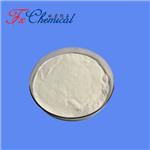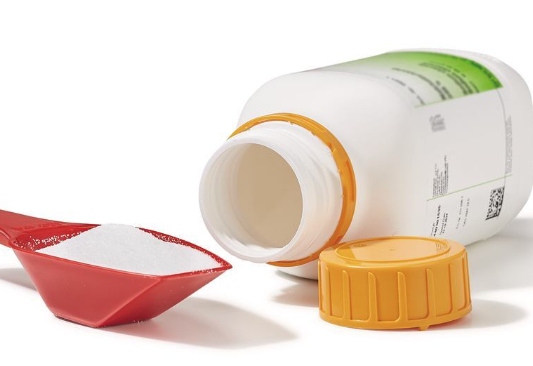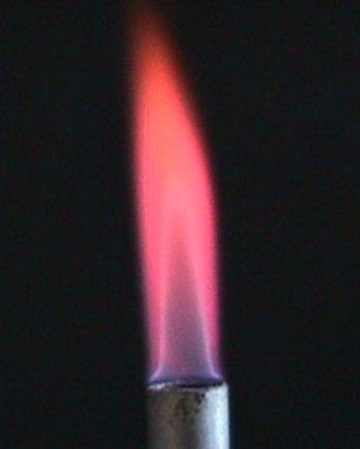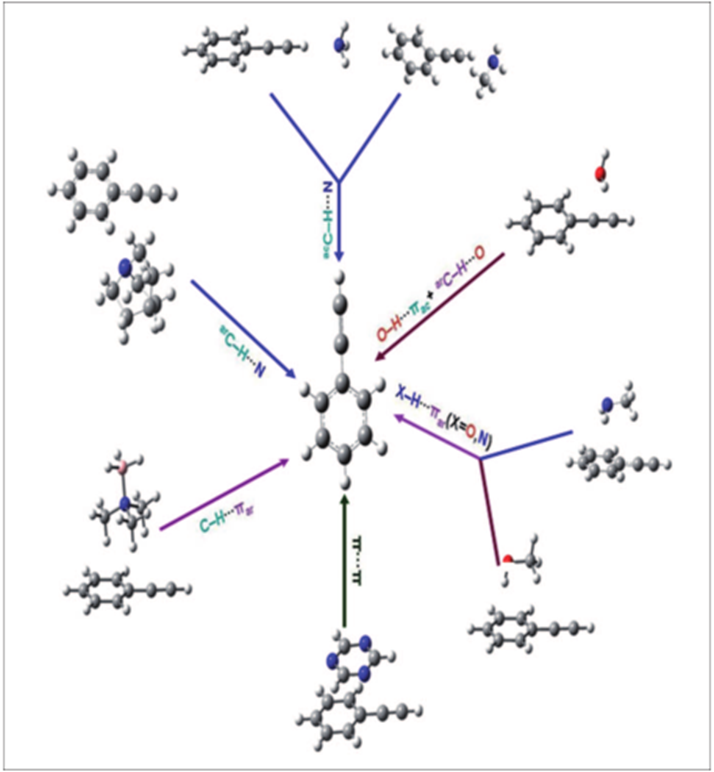General description of Lithium chloride
General description
Lithium chloride appears as colorless crystals or powder. Low toxicity. Lithium chloride is a metal chloride salt with a Li(+) counterion. It has a role as an antimanic drug and a geroprotector. It is an inorganic chloride and a lithium salt. A salt of lithium that has been used experimentally as an immunomodulator.
Physical and Chemical properties
Physical properties lithium chloride is a white crystal, which is easily soluble in water. Under standard conditions, the solubility is 67g / 100ml water. It is also easily soluble in organic solvents such as ethanol, acetone and pyridine, but difficult to dissolve in ether. Therefore, if chlorohalogenated hydrocarbons are used in the preparation of alkyl lithium, lithium chloride can be precipitated in ether to obtain free alkyl lithium reagent (lithium bromide and lithium iodide form adducts with alkyl lithium and play the role of stabilizer). The melting point of lithium chloride is 605 ℃, the boiling point is 1350 ℃, and the lattice energy is 853 kJ / mol.
Chemical properties aqueous solution is neutral or slightly alkaline. Electrolytic anhydrous lithium chloride can produce metal lithium and chlorine. Metal lithium can also be deposited by electrolysis of pyridine solution of anhydrous lithium chloride. Lithium chloride can form a variety of hydrates. From the phase diagram of licl-h2o, it can be clearly seen that its hydrates include LiCl · H2O, LiCl · 2H2O, LiCl · 3H2O, LiCl · 5H2O and so on. The number of crystal water depends on the crystallization temperature. The lower the temperature, the higher the degree of hydration. Therefore, the solubility of lithium (LI) ion in ammonia chloride solution is much greater than that of lithium (LI) ion in ammonia chloride solution. Like other ionic chlorides, lithium chloride can also provide chloride ions and lithium ions in aqueous solution, and precipitate insoluble chloride or lithium salt with some other ions. Soluble lithium chloride is a sodium chloride structure, in which the chemical bond is not a typical ionic bond. Therefore, it can be dissolved in many organic solvents and form adducts with ethanol, methanol and amines. This property can be used to separate lithium chloride from alkali metal chloride. Due to the small ion radius and high hydration energy of lithium, the solubility of lithium chloride is much higher than that of other congeneric chlorides (83g / 100mL, 20 ℃). Its aqueous solution is alkaline.
Application
Lithium chloride is mainly used in the field of air conditioning, as flux, desiccant, chemical reagent, fireworks, dry batteries and metal lithium
1.The Skeletal-Protecting Action and Mechanisms of Action for Mood-Stabilizing Drug Lithium Chloride:The lack of Cx43 results in impaired bone formation and healing. The fractured animals were orally treated with lithium chloride (LiCl) at the dose of 200 mg/kg starting from day 4 post-fracture. They reported lower mineral apposition rate (MAR), bone formation rate (BFR), bone volume (BV)/total volume (TV), collagen type I alpha 1 (Col1a1), bone morphogenetic protein-2 (BMP-2), and osteocalcin (OCN) expressions in the Cx43 conditional knock out fractured mice compared to the wild-type fractured mice. Impaired osteoclastogenesis and functional deficits in healing were observed in the Cx43 conditional knockout fractured mice. Supplementation with LiCl rescued Cx43 conditional knockout fractures by increasing BV/TV, ultimate torque at failure and torsional rigidity[1].
2. Lithium, the lightest of all solide elements, has been used for the treatment of bipolar disorder since 1970s. Many reports in the literature on LiCl cannot be cross validated. LiCl has been reported to modulate a number of intracellular processes in vitro, such as ion transport, cyclic nucleotide metabolism, G protein function, and the activity of DNA polymerase.19,82–87 The biological effects of LiCl are dose and time dependent. Higher concentrations of LiCl specifically inhibit GSK-3β and lead to programmed cell death, especially autophagic cell death. However, low concentrations of LiCl stimulate the cells to proliferate by stimulating the Wnt/β-catenin signaling pathway.88–91 Wnt signaling has been implicated as a stem cell growth factor in several cancer types.89 Although generally used to activate the canonical Wnt signaling by inhibiting GSK-3β, LiCl can also activate non-Wnt pathways. Furthermore, GSK-3β itself mediates several signaling pathways, and regulates the hematopoietic stem cell repopulation through the Wnt, Notch, and Hedgehog pathways. LiCl has a key role in the cell survival, growth, and differentiation of normal and neoplastic cells. It has cancerogenic and anti-cancerogenic properties, meaning that it can inhibit or stimulate the growth of normal and cancer cells (i.e., it has a biphasic effect).95 Although LiCl leads the cells to autophagic and apoptotic cell death, the therapeutic effects of LiCl on the cells are controversial, and these effects may change with the drug concentration and the incubation time.96 Moreover, LiCl treatment[2]. induces reactive oxygen species (ROS) generation and activates the AKT/mTOR pathway.
3. Diatomite from China, Korea and Japan was modified by LiCl, and the moisture absorption and dehumidification properties of the modified diatomite were analyzed and discussed. LiCl modification can significantly improve the humidity control performance of diatomite, among which Japanese diatomite has the best moisture absorption performance. The experimental results show that the Japanese diatomite modified by LiCl has the best moisture absorption and dehumidification properties under the optimum experimental conditions of LiCl concentration of 30%, mass ratio of 1:15 and modification temperature of 80 ℃; After 24 hours of moisture absorption experiment, the moisture absorption of modified diatomite reached 103.67%; The moisture released from the modified diatomite was 66.7% after storage in the pores. SEM observation shows that LiCl particles are deposited and adsorbed on the surface of modified diatomite, which increases its average pore size and provides conditions for good moisture absorption.
Synthesis
The crystallization of LiCl · 2H2O can be obtained by evaporating LiCl aqueous solution, and the anhydrous salt can be obtained when it is higher than 98 ℃. However, it will be hydrolyzed at the same time before the crystallization water is completely removed, and some HCl will be lost, making the product alkaline [3]. Pure anhydrous LiCl (pH=6~7 in aqueous solution) should be dehydrated by dehydration, CO heated with NH4Cl, heated in a dry HCl airstream to 200 degrees centigrade or under no oxygen conditions, and then prepared by spray drying with pure nitrogen. LiCl · 2H2O or anhydrous salt are easy to absorb moisture in the air and become water droplets. In industry, it is mainly extracted from lepidolite, spodumene and salt brine after extracting NaCl and KCl. It is usually prepared by the reaction of Li2CO3 or LiOH with hydrochloric acid. Anhydrous LiCl produced by some reagent plants is often a block obtained by thermal filtration when evaporating LiCl aqueous solution to 100-110 ℃, and its water content is 3% - 5%. The reaction equation is[3]:
Figure 1 the synthesis route of Lithium chloride
References
1.Wong S. K., Chin K. & Ima-Nirwana S., "The Skeletal-Protecting Action and Mechanisms of Action for Mood-Stabilizing Drug Lithium Chloride: Current Evidence and Future Potential Research Areas," Frontiers in Pharmacology, Vol.11(2020).
2.Bilir A., Aynacioglu A. S. & Tuna M. Y., "The Possible Interactions and Therapeutic Roles of Lithium Chloride and Midkine on Cancer Treatment," Crit Rev Oncog, Vol.24, No.1(2019), pp.35-45.
3.Ma Youhai, Ma Chenggong: Analysis on the production process and influencing factors of lithium chloride in Salt Lake, salt science and chemical industry, No. 03, 2021, pp. 40-42.
You may like
Related articles And Qustion
See also
Lastest Price from Lithium chloride manufacturers

US $0.00/KG2025-04-21
- CAS:
- 7447-41-8
- Min. Order:
- 25KG
- Purity:
- 98%min
- Supply Ability:
- 30tons/month

US $1.00/KG2025-04-21
- CAS:
- 7447-41-8
- Min. Order:
- 1KG
- Purity:
- 99%
- Supply Ability:
- 10 mt




